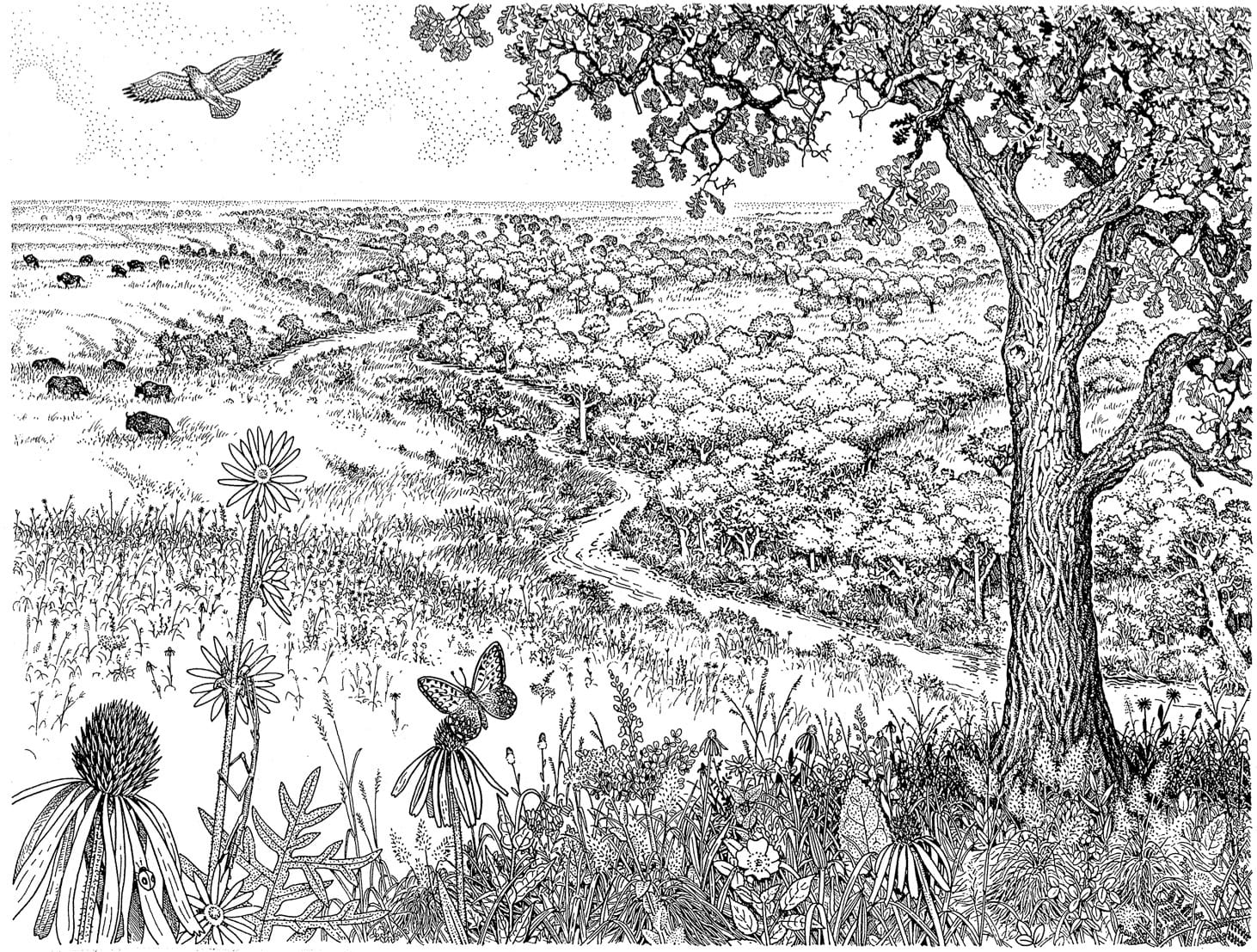Bioregionalism, healing the land and oneself

By Christiane Rey
As someone who spent the first 31 years of my life in the same area of Belgium, I had never thought of bioregions, being anchored in place, knowing the plants, the animals, the history, the cultural practices of my area, etc. It all came naturally as I grew up, thanks to my parents and people around me. Only when I moved to Chicago in 1985 did I feel the sudden need to discover where I was, what I was becoming part of, trying to anchor myself in a new place that I knew little about. I was fortunate to stumble on the North Branch Prairie Project, as it was then called, a pioneering ecological restoration community of active citizens who started learning about and restoring our natural areas in the seventies.
The bioregion of Chicago is unique thanks to its glacial history and its location in the Great Lakes region, at the convergence of the prairie to the west and the woodlands to the east and south. The last glaciers retreated some 10,000 years ago from here, leaving a large flat glacial lake plain that was eventually covered with the tall-grass prairies characteristic of this region as well as numerous wetlands, bordered by concentric moraine ridges, as in the Palos area, where woodlands dominate. As a result, the Chicago area is host to a great biodiversity within its prairies, savannas, open woods and forests, rivers and bird-filled wetlands. There is even an institution unique for a big metropolitan area, the Chicago Wilderness Alliance, that celebrates and stewards this biodiversity by planning landscape- scale approaches to conservation.
Ecological restoration of a parcel of land starts with an eRort to really understand the land, and what factors shape the vegetation: soils, hydrology, the prevalence of fires before settlement, etc. You need to learn the plants, some are conservative and need high quality, little disturbed environments while others are more common or even invasive. Plants form communities and learning which ones like growing together is important. Stewarding demands observation and humility to learn from the land and from the plants and make sure that our actions are beneficial and not further disturbances. The work of a steward varies around the year. Starting with summer, one looks for invasives, a year-round pursuit, although the plants targeted change with the seasons, but it is also a time to collect seeds, one of the most rewarding activities. In the fall, more collecting and then the seeds are gathered, processed and divided into various mixes based on wetness and light needs, from dry open prairie to wet woods and wetlands. Fall and winter are times to work on maintaining paths, joyously burning brush piles resulting from workdays when buckthorn and other invasives were cut, maybe creating fire breaks if the land is to be burned in the early Spring, and seeding, another deeply satisfying activity. Some seeds need the cold of winter to germinate in the spring, others might be seeded later. Spring is often a time to observe, to assess how winter impacted the land and see what comes up, maybe run transects or do other monitoring activities. I was fortunate to become a co-steward of a beautiful prairie, Somme Nature Preserve. This work taught me so much, and it made me appreciate the potential of positive human interaction with the landscape.
Bioregional herbalism is a continuation of getting acquainted with the land, trying to live in greater harmony with the natural world and deepening my roots in the Chicago soil. It offers a more intimate relationship with plants, as the plants we use medicinally become part of us. The qualities of observation and respect are just as important as for restoration. I see the two activities as complementary, a beautiful dance where we take care of one another, us and the land. For me that journey is just beginning, and I am full of gratitude.



Member discussion